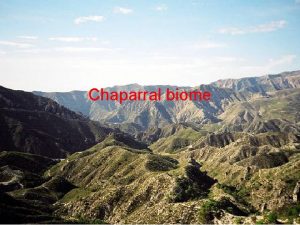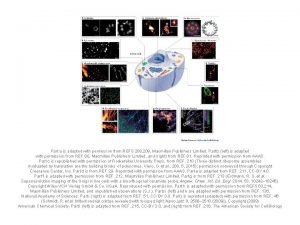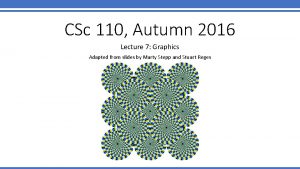CSc 110 Autumn 2016 Lecture 31 Encapsulation Adapted








- Slides: 8

CSc 110, Autumn 2016 Lecture 31: Encapsulation Adapted from slides by Marty Stepp and Stuart Reges

Abstraction Don't need to know this Can focus on this!!

Encapsulation • encapsulation: Hiding implementation details of an object from its clients. • Encapsulation provides abstraction. • separates external view (behavior) from internal view (state) • Encapsulation protects the integrity of an object's data.

Private fields • A field can be made invisible to outsiders • No code outside the class can access or change it easily. __name • Examples: self. __id self. __name • Client code sees an error when accessing private fields:

Accessing private state • We can provide methods to get and/or set a field's value: # A "read-only" access to the __x field ("accessor") def get_x(self): return self. __x # Allows clients to change the __x field ("mutator") def set_x(self, new_x): self. __x = new_x • Client code will look more like this: print("p 1: (" + str(p 1. get_x()) + ", " + str(p 1. get_y()) + ")") p 1. set_x(14)

Benefits of encapsulation • Provides abstraction between an object and its clients. • Protects an object from unwanted access by clients. • A bank app forbids a client to change an Account's balance. • Allows you to change the class implementation. • Point could be rewritten to use polar coordinates (radius r, angle θ), but with the same methods. • Allows you to constrain objects' state (invariants). • Example: Only allow Points with non-negative coordinates.

Point class, version 4 # A Point object represents an (x, y) location. class Point: self. __x self. __y def __init__(self, initial_x, initial_y): self. __x = initial_x self. __y = initial_y def distance_from_origin(self): return sqrt(self. __x * self. __x + self. __y * self. __y) def get_x(self): return self. __x def get_y(self): return self. __y def set_location(self, new_x, new_y): self. __x = new_x self. __y = new_y def translate(self, dx, dy): self. __x = self. __x + dx self. __y = self. __y + dy

Client code, version 4 def main 9): # create two Point objects p 1 = Point(5, 2) p 2 = Point(4, 3) # print each point print("p 1: (" + str(p 1. get_x()) + ", " + str(p 1. get_y()) + ")") print("p 2: (" + str(p 2. get_x()) + ", " + str(p 2. get_y()) + ")") # move p 2 and then print it again p 2. translate(2, 4) print("p 2: (" + str(p 2. get_x()) + ", " + str(p 2. get_y()) + ")") OUTPUT: p 1 is (5, 2) p 2 is (4, 3) p 2 is (6, 7)















